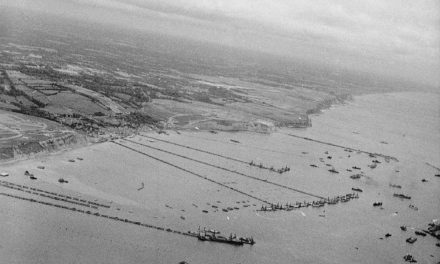The History Guild Weekly History Quiz.
See how your history knowledge stacks up.
Have an idea for a question? Suggest it here and we’ll include it in a future quiz!
Want to know a bit more about the questions in the quiz, or the story behind them? Read on!
1. What almost lead to Apollo 11 aborting their moon landing?
A 1202 computer program alarm – The basic computer for the Lunar Module was overloaded by radar altimeter signals that it was using to calculate it’s descent profile. Each time it was overloaded it restarted and generated a 1202 alarm. This happened several times during the final descent to the lunar surface.
2. Which country did Augusto Pinochet rule from 1974 to 1990?
Chile – Pinochet was the head of the armed forces before seizing power from the left leaning democratically elected President Salvador Allende. The coup was supported and partly orchestrated by the USA and Australia. Pinochet persecuted leftists, socialists and political critics, resulting in the executions of over 3,000 people, the internment of 80,000 people, and the torture of tens of thousands.
3. In one of the Royal Navy’s worst defeats, who destroyed or captured 15 British ships in the “Raid on the Medway”?
The Dutch – During the second Anglo-Dutch war in 1667 a successful attack was conducted by the Dutch navy on English warships laid up in the fleet anchorages off Chatham Dockyard and Gillingham. Over several days the Dutch bombarded and captured the town of Sheerness, sailed up the Thames estuary to Gravesend, then sailed into the River Medway to Chatham and Gillingham. Here they engaged fortifications with cannon fire, burned or captured three capital ships and ten more ships of the line, and captured and towed away the flagship of the English fleet, HMS Royal Charles.
4. Which second world war Axis leader was born first?
Benito Mussolini – Born 1883.
Adolf Hitler – Born 1889.
Emperor Hirohito – Born 1901.
5. During which years did the USA have the prohibition of alcohol in place?
1920-1933 – Prohibitionists first attempted to end the trade in alcoholic drinks during the 19th century. Led by pietistic Protestants, they aimed to heal what they saw as an ill society beset by alcohol-related problems such as alcoholism, family violence and saloon-based political corruption. This was achieved nationwide under the Eighteenth Amendment to the United States Constitution in 1920. Following the ban, criminal gangs gained control of the beer and liquor supply in many cities. There was widespread non-compliance, with an estimated 32,000 “speakeasies” in New York City alone. By the late 1920s, a new opposition to prohibition emerged nationwide. Critics attacked the policy as causing crime, lowering local revenues, and imposing “rural” Protestant religious values on “urban” America. Prohibition ended with the ratification of the Twenty-first Amendment, which repealed the Eighteenth Amendment in 1933, though prohibition continued in some states.
6. During WW1 what important resource did Nauru provide great quantities of for the Allies?
Phosphate – The economy of Nauru has been almost wholly dependent on phosphate, which has led to environmental catastrophe on these islands, with 80% of the nations’ surface having been strip-mined.
7. What year were Britain and Scotland joined in the Acts of Union?
1707 – By the two Acts, the Kingdom of England and the Kingdom of Scotland—which at the time were separate states with separate legislatures, but with the same monarch—were, in the words of the Treaty, “United into One Kingdom by the Name of Great Britain”.
8. What weapon are these soldiers using?

25-pounder field gun – This was the major British field gun and howitzer during the Second World War. The picture above is an Australian 25-pounder at El Alamein in July 1942.
9. Who lead the first expedition that crossed the Antarctic Circle?
James Cook – In 1773, James Cook and his crew crossed the Antarctic Circle for the first time; however, although they discovered nearby islands, they did not catch sight of Antarctica itself. It is believed he was as close as 240 km (150 mi) from the mainland.
10. The Battle of Spion Kop was part of which conflict?
Boer War – A battle between British forces and two Boer Republics—the South African Republic and the Orange Free State—during the campaign by the British to relieve the besieged city Ladysmith during the initial months of the Second Boer War.
The British climbed up the hill at night and in dense mist. They surprised the small Boer piquet and drove them off the kop at bayonet point. A half-company of British sappers began to entrench the position with a mere 20 picks and 20 shovels (while almost 1,000 soldiers stood around idle).
As dawn broke, the British discovered that they held only the smaller and lower part of the hilltop of Spion Kop, while the Boers occupied higher ground on three sides of the British position. The British had no direct knowledge of the topography of the summit and the darkness and fog had compounded the problem. Furthermore, the British trenches were inadequate for all defensive purposes. Because the summit of the kop was mostly hard rock, the trenches were at most 40 centimetres (16 in) deep and provided an exceptionally poor defensive position – the British infantry in the trenches could not see over the crest of the plateau and the Boers were able to fire down the length of the crescent-shaped trench from the adjacent peaks. The British suffered heavy casualties and were defeated.
Articles you may also like

General History Quiz 107
1. What does the Gurka’s famous battle cry ‘Ayo Gurkhali!’ translate to?
Try the full 10 question quiz.










